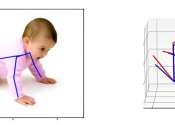Last update:
Computer Sciences news

Degradation-adaptive neural network for jointly single image dehazing and desnowing
In harsh winter scenes, the captured images often suffer from haze and snow degradations simultaneously, which significantly affect the performance of high-level computer vision tasks. Most existing restoration methods are ...
Computer Sciences
3 hours ago
0
15

Prototype browser extension adds Wikipedia-like citations on YouTube to curb misinformation
While Google has long been synonymous with search, people are increasingly seeking information directly through video platforms such as YouTube. Videos can be dense with information: text, audio, and image after image. Yet, ...
Internet
5 hours ago
0
19

New software trained on photographic database may allow facial recognition beneath the mask
During the COVID-19 pandemic, facemasks became almost ubiquitous and still are in some environments. There is a need for face recognition to be able to "see behind the mask" for security and safety.
Software
May 7, 2024
0
8

3D video conferencing tool lets remote user control the view
Collaborating on a physical object when two people aren't in the same room can be extremely challenging, but a new remote conferencing system allows the remote user to manipulate a view of the scene in 3D, to assist in complex ...
Computer Sciences
May 6, 2024
0
25

Researchers propose design methodology for hardware Gaussian random number generators
A research team from the University of Science and Technology of China (USTC) of the Chinese Academy of Sciences (CAS) has proposed a novel design methodology for Gaussian random number (GRN) generators tailored for SerDes ...
Hardware
May 6, 2024
0
1

Multiplexed neuron sets make smaller optical neural networks possible
Seeking to improve the practicality of optical neural networks that use wavelength division multiplexing, a research team developed a structure called multiplexed neuron sets and a corresponding backpropagation training algorithm.
Computer Sciences
May 6, 2024
0
11

All the right moves in martial arts: Researchers develop system to quickly identify errors and improve form
Research in the International Journal of Biometrics introduces a new method for assessing a practitioner's precision in martial arts training. The method focuses on quickly identifying errors in the athlete's movements and ...
Engineering
May 3, 2024
0
5

Team develops efficient stochastic parallel gradient descent training for on-chip optical processors
A new publication in Opto-Electronic Advances discusses efficient stochastic parallel gradient descent training for on-chip optical processors.
Electronics & Semiconductors
May 1, 2024
0
11

Researchers conduct survey on deduplication systems
A review published in the International Journal of Grid and Utility Computing has investigated ways in which the increasing problem of duplicate data in computer storage systems might be addressed. Solutions to this problem ...
Computer Sciences
May 1, 2024
0
6
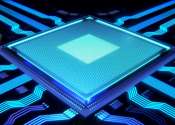
A new framework to improve high computing performance
From a luxury to a day-to-day necessity, computing isn't quite what it used to be. As applications like machine learning and 5G mobile networks become the norm, the need for high computing performance has never been greater. ...
Computer Sciences
Apr 30, 2024
0
29

AI speech analysis may aid in assessing and preventing potential suicides, says researcher
Speech is critical to detecting suicidal ideation and a key to understanding the mental and emotional state of people experiencing it. Suicide hotline counselors are trained to quickly analyze speech variation to better help ...
Computer Sciences
Apr 30, 2024
0
24

Mathematical formulation of hazardous scenarios for automated driving systems
A research group including Professor Hasuo Ichiro of the Information Systems Architecture Science Research Division of the National Institute of Informatics, Dr. Waga Masaki, Assistant Professor of the Department of Informatics ...
Computer Sciences
Apr 29, 2024
0
0

Researchers develop a new way to instruct dance in virtual reality
Researchers at Aalto University were looking for better ways to instruct dance choreography in virtual reality. The new WAVE technique they developed will be presented in May at the CHI conference for human-computer interaction ...
Computer Sciences
Apr 29, 2024
0
29

Initiative encourages computer science students to incorporate ethics into their work
Computer science students at the University of Toronto are learning how to incorporate ethical considerations into the design and development of new technologies such as artificial intelligence with the help of a unique undergraduate ...
Computer Sciences
Apr 29, 2024
0
6

As quantum computers advance, encryption methods will need to keep up
Imagine the tap of a card that bought you a cup of coffee this morning also let a hacker halfway across the world access your bank account and buy themselves whatever they liked. Now imagine it wasn't a one-off glitch, but ...
Computer Sciences
Apr 29, 2024
0
3
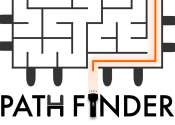
Computer scientists unveil novel attacks on cybersecurity
Researchers have found two novel types of attacks that target the conditional branch predictor found in high-end Intel processors, which could be exploited to compromise billions of processors currently in use.
Computer Sciences
Apr 27, 2024
0
82

'POLAR' lowers the adoption barrier for adaptive query processing in database systems
The preprint "POLAR: Adaptive and Non-invasive Join Order Selection via Plans of Least Resistance" introduces an adaptive query processing technique that lowers the adoption barrier for existing database systems while decreasing ...
Computer Sciences
Apr 25, 2024
0
0
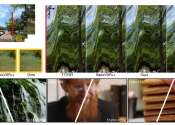
Adobe's VideoGigaGAN uses AI to make blurry videos sharp and clear
A team of video and AI engineers at Adobe Research has developed an AI application called VideoGigaGAN, that can accept a blurry video and enhance it to make it a much shaper product. The team describes their work and results ...

Research team accelerates multi-physics simulations with El Capitan predecessor systems
Researchers at Lawrence Livermore National Laboratory (LLNL) have achieved a milestone in accelerating and adding features to complex multi-physics simulations run on Graphics Processing Units (GPUs), a development that could ...
Engineering
Apr 24, 2024
0
1
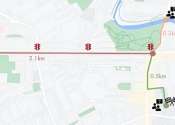
New tech could help traveling VR gamers experience 'ludicrous speed' without motion sickness
Vehicle passengers using VR headsets to pass the time during travel could be set to enjoy games which move at 'ludicrous speed' without experiencing motion sickness, researchers say.
Consumer & Gadgets
Apr 24, 2024
0
15
More news

Emulating neurodegeneration and aging in artificial intelligence systems

Holographic displays offer a glimpse into an immersive future

With a game show as his guide, researcher uses AI to predict deception

New mitigation framework reduces bias in classification outcomes

New logarithmic step size for stochastic gradient descent

Large language models generate biased content, warn researchers

Advancing brain-inspired computing with hybrid neural networks
Other news

Ultrasound experiment identifies new superconductor

Topological phonons: Where vibrations find their twist

Laser printing on fallen tree leaves produces sensors for medical and laboratory use

Brain-inspired computing may boil down to information transfer

Computer scientists show the way: AI models need not be so power hungry

Changes in pig farming in the 20th century spread antibiotic-resistant Salmonella around the world, finds study

How aging clocks tick: New study points to stochastic changes in cells

Genes spatially organize for efficient mRNA splicing, study shows
















































